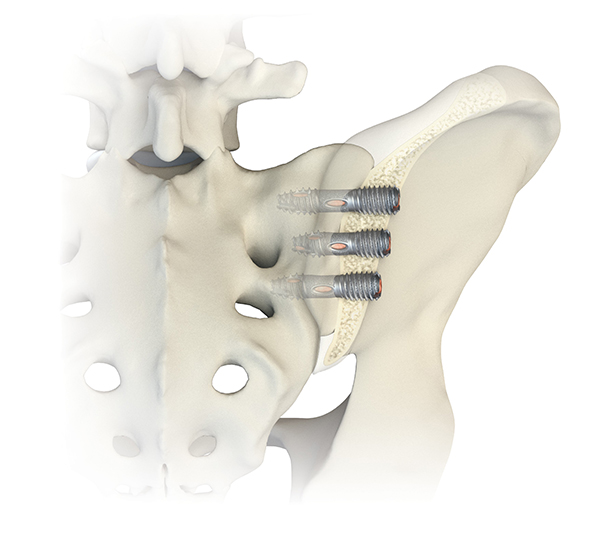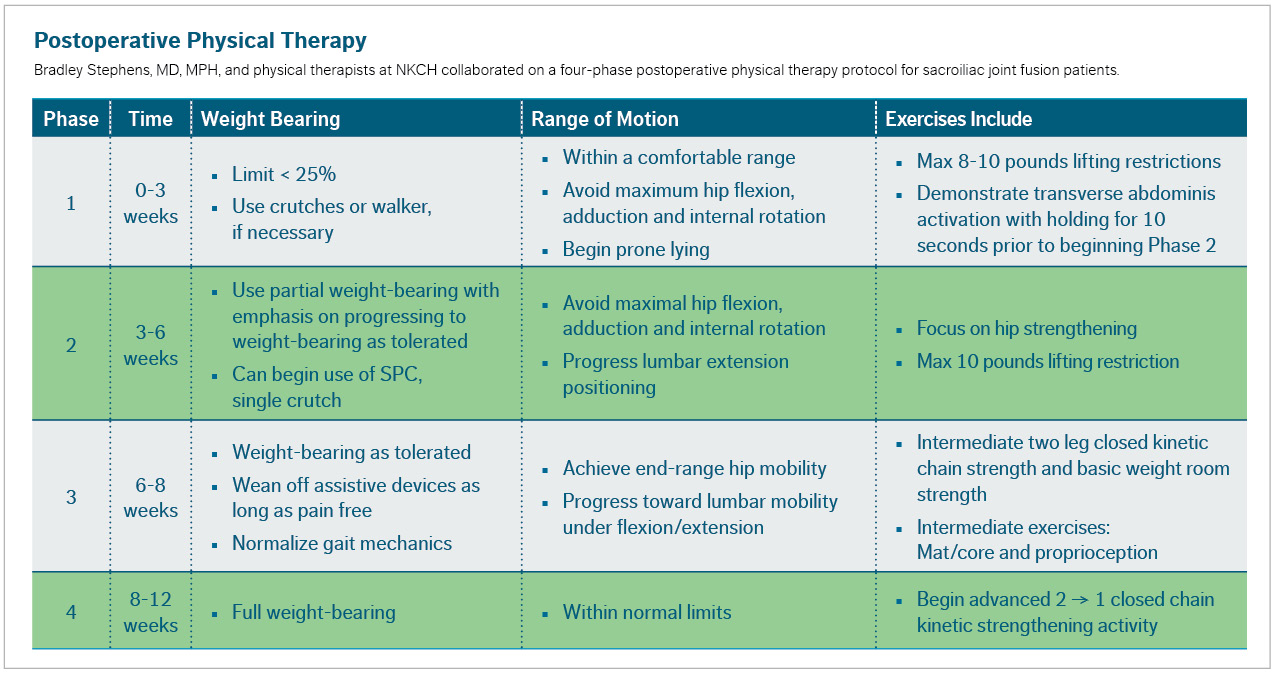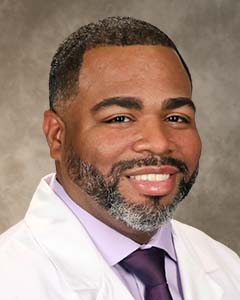Novel Surgery Alleviates Sacroiliac Joint Dysfunction Pain
December 28, 2021Categories: Cover Story
 The system employs titanium alloy implant screws that secure the SI joint. A bone graft encourages fusion across the joint. Illustration: Genesys Spine
The system employs titanium alloy implant screws that secure the SI joint. A bone graft encourages fusion across the joint. Illustration: Genesys Spine
When people complain of back pain, one cause – sacroiliac joint dysfunction – is often overlooked. Yet, SI joint dysfunction accounts for 15%-30% of back pain.
“Patients instead are referred for lumbar spine radiculopathy evaluations, but their imaging does not reveal impressive findings, and their symptoms remain severe,” said Bradley Stephens, MD, MPH, a board-certified neurosurgeon with Meritas Health Neurosurgery. “Unfortunately, these patients either undergo back surgery that doesn’t provide relief, or they don’t receive any intervention. They are left with chronic debilitating pain that in some cases progresses and worsens.”
Dr. Stephens provides relief through a novel surgery, SI joint fusion. The system, which is not available at many hospitals, employs titanium alloy implant screws that secure the SI joint and a bone graft that encourages fusion across the joint.
Symptoms
“Unfortunately, patients who present with SI joint dysfunction and those with hip and lumbar spine issues often mimic each other,” Dr. Stephens said.
He noted that patients with SI joint dysfunction have other symptoms in addition to their low back pain. They also have pain that:
- Feels sharp and stabbing with numbness and tingling
- Radiates down to the hip, lateral thigh or back of thigh
- Worsens when going from sitting to standing, standing to sitting or climbing stairs
More common in women than men, risk factors include:
- Pregnancy, which loosens the ligaments across the SI joint
- Previous trauma to the pelvis through high-contact sports, which puts stress on the pelvis
- Prior lumbar fusions
Diagnosis
When Dr. Stephens suspects SI joint dysfunction, he first refers patients for a course of physical therapy and pain management with a therapeutic and diagnostic injection to the SI joint.
“If their pain goes away and is long-lasting – as much as three to six months – they can continue with PT and injections,” Dr. Stephens said. “If their pain is decreased by 50%-70%, but only for a few days after two separate steroid injections, then they would be candidates for SI joint fusion.”
He added an X-ray or MRI may be used to detect evidence of arthritic or degenerative changes of the SI joint.
Fusion
In the minimally invasive procedure, Dr. Stephens makes two small incisions for placement of three screws and an inner-body graft made of cadaver bone at the SI joint. Screws can be 7 mm, 9.5 mm or 11.5 mm in diameter, with their length as short as 30 mm-40 mm or as long as 80 mm. He uses fluoroscopy to confirm appropriate trajectories and placements.
In addition to an anesthesiologist and operating room nurses, a neuromonitoring technician is on hand to ensure nearby nerve roots remain untouched. The surgery is about one hour, and length of stay is one to two nights. Patients return home with a walker and are restricted to 50% weight-bearing for three to six weeks.
“Essentially, inappropriate pain receptors in the ilium cause their pain,” Dr. Stephens said. “By placing large screws through the ilium and into the sacrum, we immobilize them, and the joint develops bony bridging to fuse over time. Typically, patients describe feeling much better either immediately postoperatively or within two to three weeks. They gradually transition from a walker to normal activity.”


Bradley Stephens, MD, MPH
Dr. Stephens earned his medical degree from the University of Pittsburgh School of Medicine. He completed his internship and residency in neurosurgery at Washington University School of Medicine. During this time, he distinguished himself by earning a master’s degree in public health from the Brown School at Washington University and completing a neurosurgery junior staff appointment at Beaumont Hospital in Dublin.